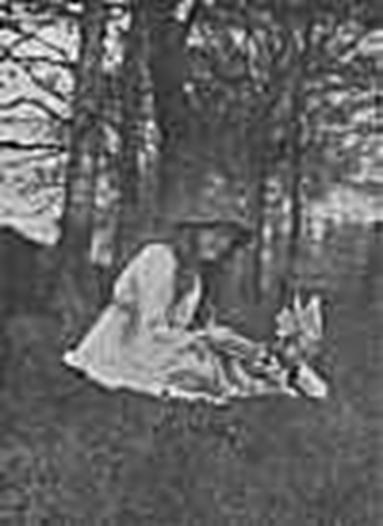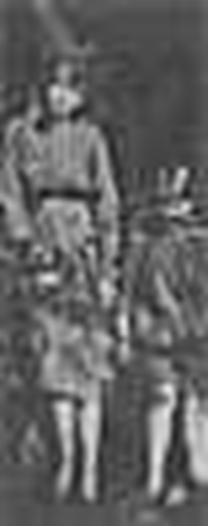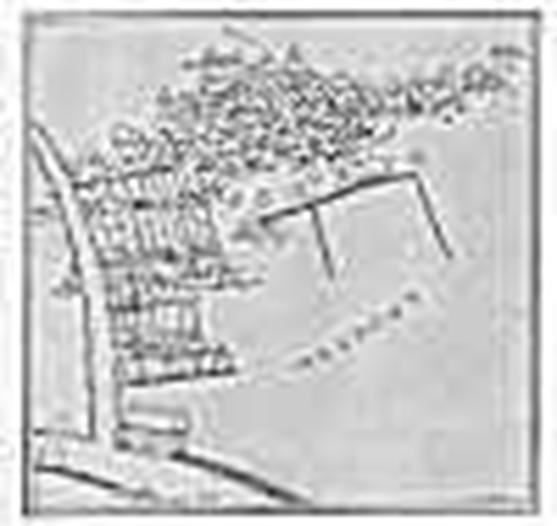Delphi Complete Works of Sir Arthur Conan Doyle (Illustrated) (1477 page)
Read Delphi Complete Works of Sir Arthur Conan Doyle (Illustrated) Online
Authors: SIR ARTHUR CONAN DOYLE

My most earnest critics came from among the spiritualists, to whom a new order of being as remote from spirits as they are from human beings was an unfamiliar idea, and who feared, not unnaturally, that their intrusion would complicate that spiritual controversy which is vital to so many of us. One of these was a gentleman whom I will call Mr. Lancaster, who, by a not unusual paradox, combined considerable psychic powers, including both clairvoyance and clairaudience, with great proficiency in the practice of his very prosaic profession. He had claimed that he had frequently seen these little people with his own eyes, and I, therefore, attached importance to his opinion. This gentleman had a spirit guide (I have no objection to the smile of the sceptic), and to him he referred the question. The answer showed both the strength and the weakness of such psychic inquiries. Writing to me in July 1920, he said:
“
Re Photographs
: The more I think of it the less I like it (I mean the one with the Parisian-coiffed fairies). My own guide says it was taken by a fair man, short, with his hair brushed back; he has a studio with a lot of cameras, some of which are ‘turned by a handle.’ He did not make it to sell Spiritualists a ‘pup,’ but did it to please the little girl in the picture who wrote fairy stories which he illustrated in this fashion. He is not a Spiritualist, but would laugh very much if anyone was taken in by it. He does not live near where we were, and the place is all different, i.e. the houses, instead of being in straight lines, are dropped about all over the place. Apparently he was not English. I should think it was either Denmark or Los Angeles by the description, which I give you for what it is worth.
“I should very much like the lens which would take persons in rapid motion with the clarity of the photo in question, it must work at F 4.5 and cost fifty guineas if a penny, and not the sort of lens one would imagine the children in an artisan’s household would possess in a hand camera. And yet with the speed with which it was taken the waterfall in the background is blurred sufficiently to justify a one second’s exposure at least. What a doubting Thomas! I was told the other day that, in the unlikely event of my ever reaching heaven, I should (
a
) Insist on starting a card file index of the angels, and (
b
) Starting a rifle range to guard against the possibility of invasion from Hell. This being my unfortunate reputation at the hands of the people who claim to know me must discount my criticisms as carping — to a certain extent, at all events.”
These psychic impressions and messages are often as from one who sees in a glass darkly and contain a curious mixture of truth and error. Upon my submitting this message to Mr. Gardner he was able to assure me that the description was, on the whole, a very accurate one of Mr. Snelling and his surroundings, the gentleman who had actually handled the negatives, subjected them to various tests and made enlarged positives. It was, therefore, this intermediate incident, and not the original inception of the affair, which had impressed itself upon Mr. Lancaster’s guide. All this is, of course, quite non-evidential to the ordinary reader, but I am laying all the documents upon the table.
Mr. Lancaster’s opinion had so much weight with us, and we were so impressed by the necessity of sparing no possible pains to get at truth, that we submitted the plates to fresh examination, as detailed in the following letter:
5
Craven Road, Harlesden, N.W
. 10,
July
12, 1920.
DEAR SIR ARTHUR,
Just a line to report progress and acknowledge your kind letters and enclosure from Kodak’s.
A week back, after your reference to Mr. Lancaster’s opinion, I thought I would get a more careful examination of the negatives made than before, though that was searching enough. So I went over to Mr. Snelling’s at Harrow and had a long interview with him, again impressing him with the importance of being utterly certain. I told you, I think, that this Mr. Snelling has had a varied and expert connection of over thirty years with the Autotype Company and Illingworth’s large photographic factory and has himself turned out some beautiful work in natural and artificial studio studies. He recently started for himself at Wealdstone (Harrow) and is doing well. Mr. Snelling’s report on the two negatives is positive and most decisive. He says he is perfectly certain of two things connected with these photos, namely:
1. One exposure only;
2. All the figures of the fairies moved during exposure, which was “instantaneous.”
As I put all sorts of pressing questions to him, relating to paper or cardboard figures, and backgrounds and paintings, and all the artifices of the modern studio, he proceeded to demonstrate by showing me other negatives and prints that certainly supported his view. He added that anyone of considerable experience could detect the dark background and double exposure in the negative at once. Movement was as easy, as he pointed out in a crowd of aeroplane photos he had by him. I do not pretend to follow all his points, but I am bound to say he thoroughly convinced me of the above two, which seem to me to dispose of all the objections hitherto advanced when they are taken together! Mr. S. is willing to make any declaration embodying the above and stakes his reputation unhesitatingly on their truth.
I am away from London from Wednesday next till the 28th when I go on to Bingley for one or two days’ investigation on the spot. I propose that you have the two negatives, which are carefully packed and can be posted safely, for this fortnight or so. If you would rather not handle them I will send them to Mr. West of Kodak’s, or have them taken to him for his opinion, for I think, as you say, it would be worth having, if he has had direct and extensive practical experience.
I am very anxious now to see this right through, as, though I felt pretty sure before, I am more than ever satisfied now after that interview the other day.
Yours sincerely,
EDW. L. GARDNER.
After receiving this message and getting possession of the negatives I took them myself to the Kodak Company’s Offices in

B. ELSIE AND THE GNOME
Photograph taken by Frances. Fairly bright day in September, 1917. The “Midg” camera. Distance,
 ELSIE AND FRANCES
ELSIE AND FRANCES
A snapshot taken by Mr. Wright in June 1917, with the “Midg” camera he had just obtained — his first and only camera.

COTTINGLEY BECK AND GLEN
Sites of photographs are marked A, B, C, D, E, and the cottage with an X.
[paragraph continues] Kingsway, where I saw Mr. West and another expert of the Company. They examined the plates carefully, and neither of them could find any evidence of superposition, or other trick. On the other hand, they were of opinion that if they set to work with all their knowledge and resources they could produce such pictures by natural means, and therefore they would not undertake to say that these were preternatural. This, of course, was quite reasonable if the pictures are judged only as technical productions, but it rather savours of the old discredited anti-spiritualistic argument that because a trained conjurer can produce certain effects under his own conditions, therefore some woman or child who gets similar effects must get them by conjuring. It was clear that at the last it was the character and surroundings of the children upon which the inquiry must turn, rather than upon the photos themselves. I had already endeavoured to open up human relations with the elder girl by sending her a book, and I had received the following little note in reply from her father: 31
Main Street, Cottingley, Bingley
,
July
12, 1920.
DEAR SIR,
I hope you will forgive us for not answering your letter sooner and thanking you for the beautiful book you so kindly sent to Elsie. She is delighted with it. I can assure you we do appreciate the honour you have done her. The book came last Saturday morning an hour after we had left for the seaside for our holidays, so we did not receive it until last night. We received a letter from Mr. Gardner at the same time, and he proposes coming to see us at the end of July. Would it be too long to wait until then, when we could explain what we know about it?
Yours very gratefully,
ARTHUR WRIGHT.
It was evident, however, that we must get into more personal touch, and with this object Mr. Gardner went North and interviewed the whole family, making a thorough investigation of the circumstances at the spot. The result of his journey is given in the article which I published in the
Strand Magazine
, which covers all the ground. I will only add the letter he wrote to me after his return from Yorkshire.
5
Craven Road, Harlesden, N.W
. 10,
July 31, 1920.
MY DEAR CONAN DOYLE,
Yours just to hand, and as I have now had an hour to sort things out I write at once so that you have the enclosed before you at the earliest moment. You must be very pressed, so I put the statement as simply as possible, leaving you to use just what you think fit. Prepared negatives, prints of quarter, half-plate, and enlarged sizes, and lantern slides, I have all here.
Also on Tuesday I shall have my own photographs of the valley scenery including the two spots shown in the fairy prints, and also prints of the two children taken in 1917 with their shoes and stockings off, just as they played in the beck at the rear of their house. I also have a print of Elsie showing her hand.
With regard to the points you raise: 1. I have definite leave and permission to act as regards the use made of these photographs in any way I think best.
Publication may be made of them, the only reserve being that full names and addresses shall be withheld.
2. Copies are ready here for England and U. S. A.
3. . . . The Kodak people and also the Illingworth Co. are unwilling to testify. The former, of course, you know of. Illingworths claim that they could produce, by means of clever studio painting and modelling, a similar negative. Another Company’s expert made assertions concerning the construction of the “model” that I found were entirely erroneous directly I saw the real ground! They, however, barred any publication. The net result, besides Snelling’s views, is that the photograph
could
be produced by studio work, but there is no evidence
positively
of such work in the negatives. (I might add that Snelling, whom I saw again yesterday evening, scouts the claim that such negatives could be produced. [paragraph continues] He states that he would pick such a one out without hesitation!)